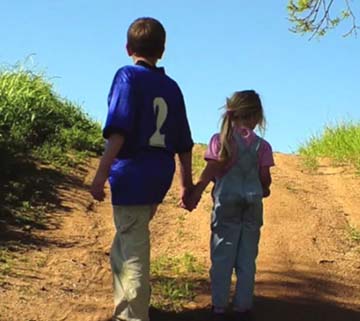Digital Stories Help Dying Patients Communicate
TN – Before she died, Theresa and Raphael’s mother created a video message to comfort her children, remind them of her everlasting love, and assure them that everything is as it should be. It is one of four digital stories created as a UT College of Nursing pilot research project.
Though her story is not real, it is the type of message a person dying of HIV/AIDS may want to leave behind.
It is one of four digital stories created as a UT College of Nursing pilot research project. The goal is to create a tool that can help persons with HIV/AIDS communicate their end-of-life and advanced care planning wishes.
The story line of each video is drawn from nursing research. The characters in each are portrayed by UT theater students.
“The students really owned the project. They did research on the characters, wrote the narrative, and produced these very authentic, emotional, and moving pieces,” said Associate Professor of Nursing Sadie Hutson, principal investigator of the project.
The idea of digital storytelling came to Hutson while conducting a National Institutes of Health research project focused on end-of-life care for HIV/AIDS patients in which she interviewed forty people in Appalachia. The digital stories are based on messages that came directly from the NIH data.
“Our aim for this project is to explore digital storytelling as a potential avenue for communication about advanced care planning wishes for patients with HIV/AIDS,” said Hutson. “The idea is to get people to plan early and outline their wishes—having a good death is part of having a good life. Those who take the time to think about their deaths during life and plan for some of the details of their final care are more apt to retain some control and comfort in their final days of life.
The short yet compelling videos portray various points of view of those dealing with dying with the disease.
- “To My Family“—Ethan expresses his unfailing and intangible love for his family and boyfriend. He conveys his wishes for what should be done with his belongings and for his memorial service.
- “I’m Still Human“—A young girl finally realizes that her pain does not isolate her, but instead connects her to others.
- “Wonderwall“—Mikey takes a selfie—and explains that his vinyl records will go to a member of his support group.
- “Theresa and Raphael“—A mother leaves a final message to her children that will carry them into the future.
The four stories can be viewed on YouTube.
Hutson is now applying for grants to buy iPads to create digital stories with patients using iMovie so patients can put together their own stories prepare for life and their death.
Hutson collaborated with Nursing Associate Professor Tami Wyatt and Professor Joanne Hall on the project, and Associate Professor of Theatre Casey Sams to find the student actors. The student actors are Brian Gligor, Steve Sherman, Hana Sherman, and Shea Holcomb.
Originally published by TNT Today
http://tntoday.utk.edu/2014/12/01/ut-nursing-digital-stories-dying-patients-communicate/


Leave a Comment
You must be logged in to post a comment.